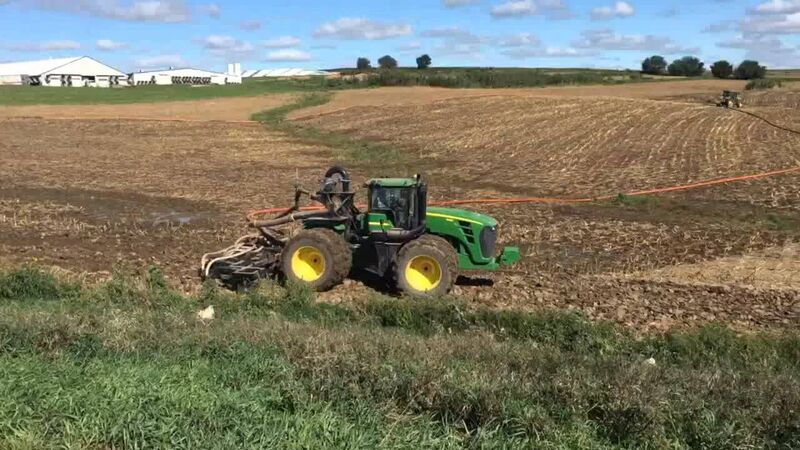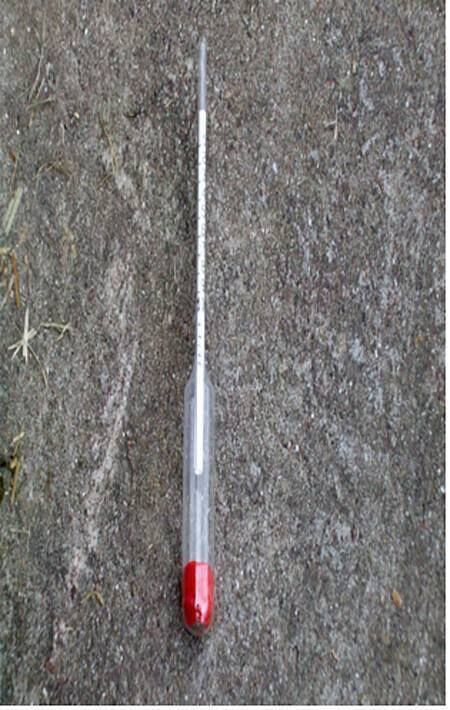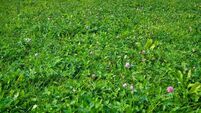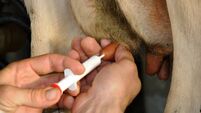The best way to utilise pig slurry on tillage land

Using pig slurry for build-up is very productive. Then, top up with your chemical fertiliser.
Targeting soils low in P and K is the best way to utilise pig slurry on tillage land, said Teagasc tillage specialist Ciaran Collins during a recent Pig Edge podcast on pig slurry as an alternative to chemical fertilisers in tillage farming.
“To do that with chemical fertiliser is really, really expensive," Mr Collins said. "Pig slurry is ideal in that scenario if you have index 1 or index 2. Using that pig slurry for build-up is very productive. Then, top up with your chemical fertiliser.
"That being said, you can certainly grow a crop just using pig slurry on its own and topping up with some nitrogen, and plenty of farmers are doing that.
"But if you’re new to pig slurry, I think targeting those low-index sites or crops with high demand is a good way of doing it. The other part of it is that we need to maximise the nutrient recovery,” he said.
Mr Collins recommended targeting nitrogen as near to growth as possible, to minimise losses. To limit ammonia volatilisation, and to maximise nitrogen recovery, incorporating the slurry between three and six hours after spreading it is recommended.
In-crop application of pig slurry is also possible, in the right conditions. “Some growers with winter cereals are taking the opportunity of the dry conditions at the moment to apply pig slurry in-crop, using a dribble-bar system. Again, that limits the volatilisation,” Mr Collins said.
A thousand gallons of typical pig slurry, with 4% dry matter, is equivalent to a bag of 19-7-20. Compared to nitrogen (N), phosphorous (P) and potassium (K) fertiliser at current prices, it is worth between €30 and €35.
The one to three P to K ratio in pig slurry is quite suitable for tillage crops, Mr Collins said. “It is quite high in nitrogen, but we have to make sure that we manage to maximise the amount of nitrogen that we get from every thousand gallons that we apply."
The nutrient value of slurry can vary slightly depending on the age of the pigs. Teagasc specialised adviser Michael McKeon explained during the podcast: “If you have it coming from sows, it might be slightly lower, 3.5% dry matter. If you have it coming from say, the finisher unit, it might be 4% to 4.5%, or even 5%.

"So, it will vary slightly, but probably the biggest issue is to make sure that the slurry has been mixed or agitated before it actually comes on to the tillage farm, to make sure that there’s no crust, to make sure, if the tank has been agitated, that you’re getting a consistent amount of nutrients, so you’re not getting highs and lows.”
The tillage farmer requires consistency. Mr McKeon recommended using a slurry hydrometer to measure the dry matter content after agitation, measuring from each end of the storage tank.
Tillage farms are often situated some distance from a source of pig slurry, but this should not pose a significant problem.
“Pig producers are very used to logistics, to having trucks on the road,” Mr McKeon said. “To deliver pig slurry, the one thing that they do probably need is to be able to plan in advance. That really comes back to having a relationship between the pig producer and the tillage grower so that, over time, they learn to work much better with each other, and it’s a win-win for both sides. Generally, I would say most of the pig producers would have no problem trying to organise logistics.
“If the pig producer is doing an export of slurry, they will put up the export on the department’s AgFood account. The grower will get a text message, saying do they wish to accept this export. That’s not a huge issue on either side. The pig producers are well used to putting that up on the system.”
Based on the nutrient management plan the tillage farmer has prepared in advance, they know the amount of slurry they wish to take on to their land.
“From a legislative perspective, we have limits, and we need to comply with those," Mr Collins said. "The only way you can do that is having a nutrient management plan on the farm. That’s the starting point. You factor in then how much you can take, based on your crops and your expected yield. The other thing that’s very important is to adjust the fertiliser programme to take account of the organic manures that you use, so that you can avail of the cost savings. Sometimes crop nutrients can be applied in excess, and then we don’t reap the benefits.”
Organic manure in rotational cropping has many benefits, including improvements in soil structure and biological properties, increased soil organic matter and trafficability, in addition to replacing some of the N, P and K requirements of the crop, while lowering the chemical fertiliser spend and reducing chemical nitrogen carbon emissions.


